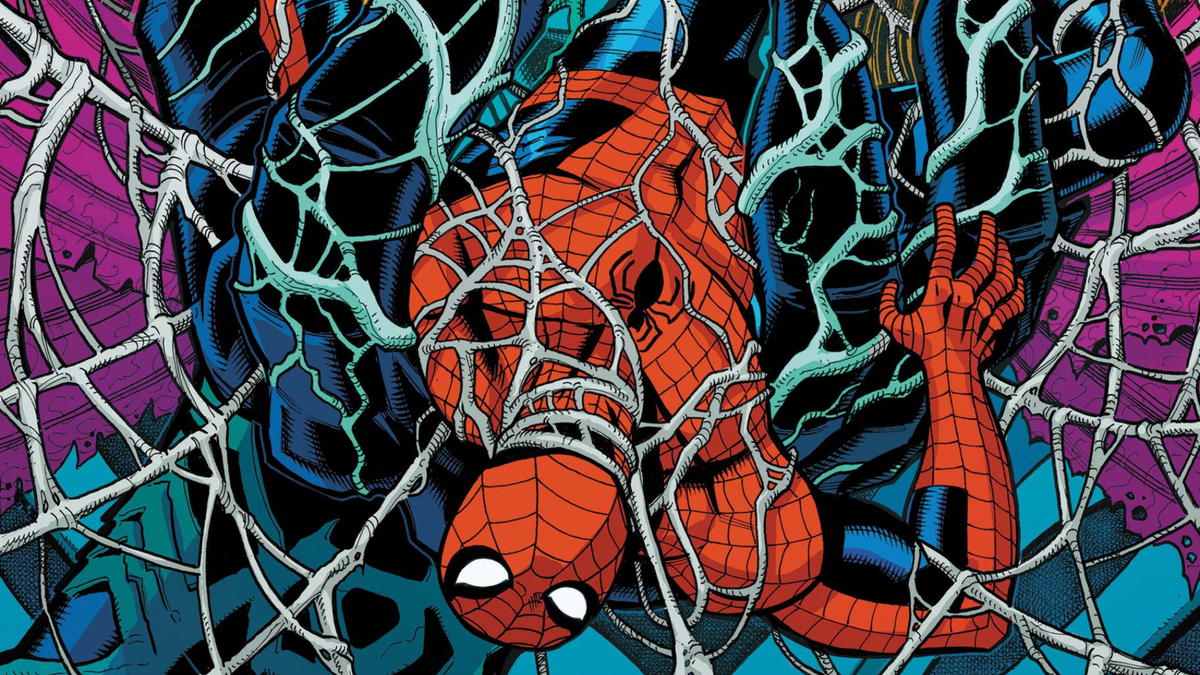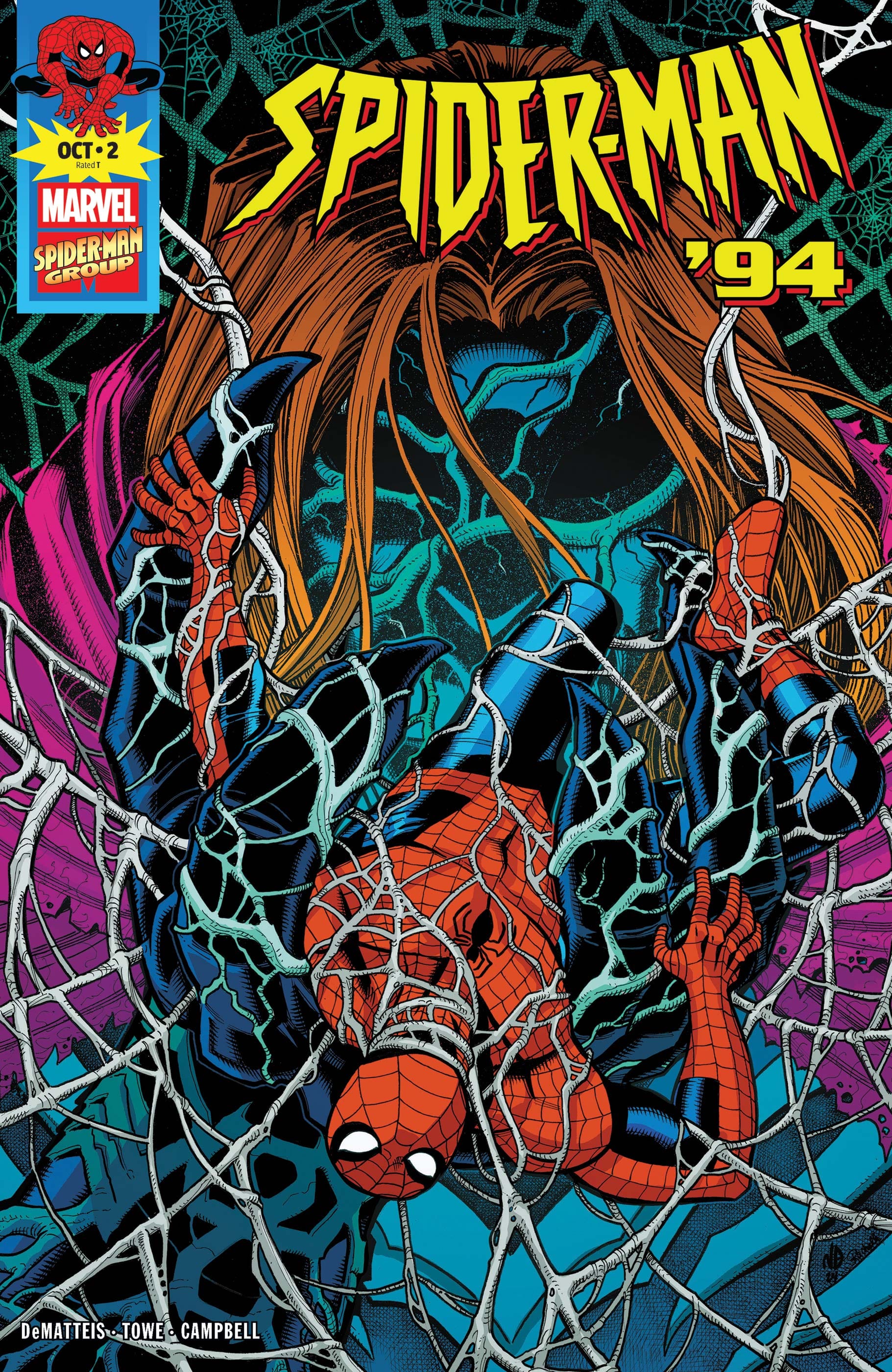
With one of the 90s’ biggest cartoon cliffhangers finally resolved, you might assume that things would finally start to go right for your favorite webslinger. He’s got Mary Jane back after rescuing her from wherever she had vanished to in Green Goblin’s portal (and marrying a clone of her, who died in his arms). Not only that, but she asked him to marry her (which as stated before, he technically already did, but hey, a happy ending’s a happy ending). However, as is typical for poor Peter Parker, just as things begin to be looking up for him, trouble comes rearing its ugly head. This time literally, as Spidey’s angriest clone, Kaine, has now made his way into the world of Spider-Man: the Animated Series. But this isn’t the Kaine we’re familiar with, as revealed in the second chapter of the beloved show’s comic continuation, and Peter’s troubles are only just beginning.
*Mild spoilers ahead for Spider-Man ‘94 #2*
Our story picks up in a lab, where we’re presented with a scene of a person being rapidly grown in a test tube. The being awakens as a mysterious voice speaks, welcoming his “son” back before revealing the speaker to be none other than Morlun. On the surface, this scene might not appear too strange to those who know of Kaine’s origins as an imperfect clone of Peter from the infamous “Clone Saga” in the mainline comics; just substitute the Jackal for Morlun. What will surprise readers familiar with Kaine’s main-universe counterpart is that this version of the character isn’t a clone of Peter, but rather is a clone of none other than Morlun himself. A twist that makes Kaine’s fate at the end of the previous issue all the more tragic, as it appears that Morlun has continually re-cloned Kaine over and over simply to absorb his lifeforce once his degeneration reaches its peak.

Elsewhere, Spider-Man is swinging around New York, thinking on issues in his personal life, when suddenly he’s attacked by a trio of C-list villains: the Grizzly, the Kangaroo, and the Gibbon. Not much of a threat, as — in Spidey’s own words — they’re “three of the most incompetent crooks” he’s ever faced. The largely one-sided fight quickly takes a turn for the worse, however, when Morlun arrives to join the fray.
Meanwhile, Mary Jane goes to visit her Aunt Anna to deal with her relative’s disparaging remarks about her and Peter’s relationship. While the two of them are able to make amends to a degree, the conversation takes a turn that could pose problems for the newly-reunited couple in the days to come.
As a massive fan of the original animated series back in the 90s, I was pleased to see how much of its character was translated into its new print format. From the way the characters behaved to the art style replicated by Jim Towe, it felt like I was watching a new episode of the original show. J.M DeMatteis’s writing feels faithful to the source material without coming across as a hollow reproduction or unoriginal attempt to cash in on the IP, which is something not every comic continuation of a cartoon can say. I’ve read my fair share of comics like that which felt as if they were only connected in name, presenting a passably similar artstyle with writing that feels clunky and out-of-character. Here, however, I could hear Chistopher Daniel Barnes’s voice when I was reading Spider-Man’s lines, just as I could Saratoga Ballantine with MJ. This is a little thing, and perhaps not something that will matter to everyone, but to me it made all the difference. It keeps this from being just another Spider-Man book and makes it something more, something that excites not just my adult self, but also the young kid excitedly watching the original show on Fox Kids or on VHS (yes, I’m that old).
But as nice as it is to dive into something so nostalgic to me, I appreciated that DeMatteis didn’t merely give us something the show had already done. It would have been easy to have the main antagonist (at least as it stands now) for this series be someone familiar, like Green Goblin or Kingpin. Instead, we’re given someone new, at least in this universe. Bringing Morlun — a villain who was central to the comics’ version of the “Spider-verse” — into the universe that first gave us the concept of the “Spider-verse” was a nice touch, and I can’t wait to see how it will develop from here.
What’s also nice is that the story makes time to allow Mary Jane’s struggles to shine. She’s been lost in another dimension for an untold amount of time, returning only to realize that most people didn’t realize she was even gone thanks to the clone of her that married Peter (and then died). It’s a lot to process, especially when some of the criticisms she’s hearing may not be entirely invalid.
Between the threat of Morlun and the conflict beginning to emerge in Peter’s personal life with MJ, there’s plenty for fans of the original cartoon and long-time Spider-Man fans alike to enjoy. While some may dislike the change to Kaine’s character or find this version of Morlun less compelling than his original comic counterpart (a fair argument, given the seemingly limited run we’re being given), I personally don’t feel that these are such great issues that they take away from what’s enjoyable about this book. Besides, it would hardly be the first time that this universe took something familiar and tweaked it to make it better fit into this world, just like many shows, movies, and video games before and after it. And if you didn’t let this ruin your enjoyment as a child, why should you let it ruin your experience now?
Spider-Man ‘94 #2 is available now from Marvel Comics.
Spider-Man '94 #2
Great
Spider-Man ‘94 #2 continues along the story begun in the previous issue, building upon it with the reveal of Kaine’s true origins and the first encounter between Spider-Man and Morlun. While some may dislike the change to Kaine’s origin and the age-old tale of Mary Jane and Peter having problems, the story is overall a fun, nostalgic ride that fans of the original show and long-time Spidey fans alike can enjoy. While it remains to be seen whether the story will be able to continue to capture the vibe of the original cartoon without feeling like a hollow copy, I’m optimistic that the series will continue to deliver.
Pros
- Writing and artwork are faithful to source material
- Unique changes to familiar faces keeps things fresh
- Mary Jane’s storyline feels natural instead of forcing a happy ending
Cons
- Some may dislike the change to Kaine’s origin
- The Peter and MJ having problems trope is beginning to feel stale, no matter how natural it may be here
This review is based on a retail copy provided by the publisher.
